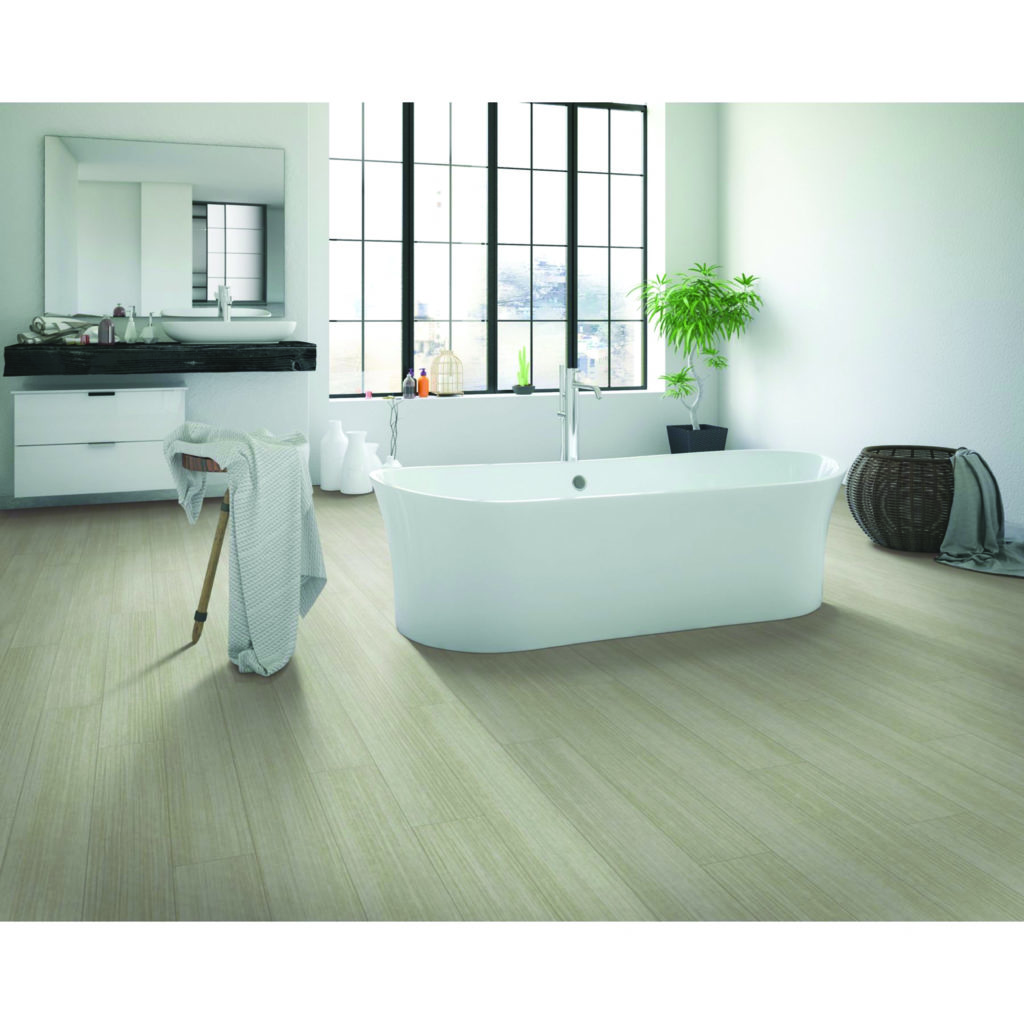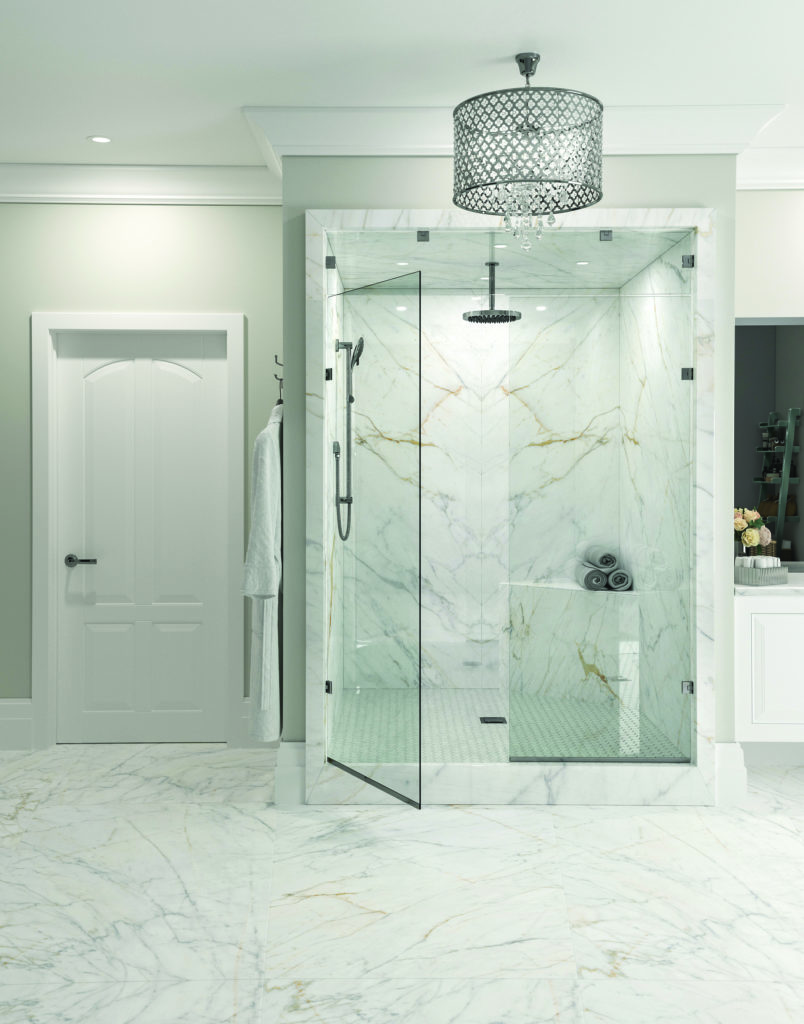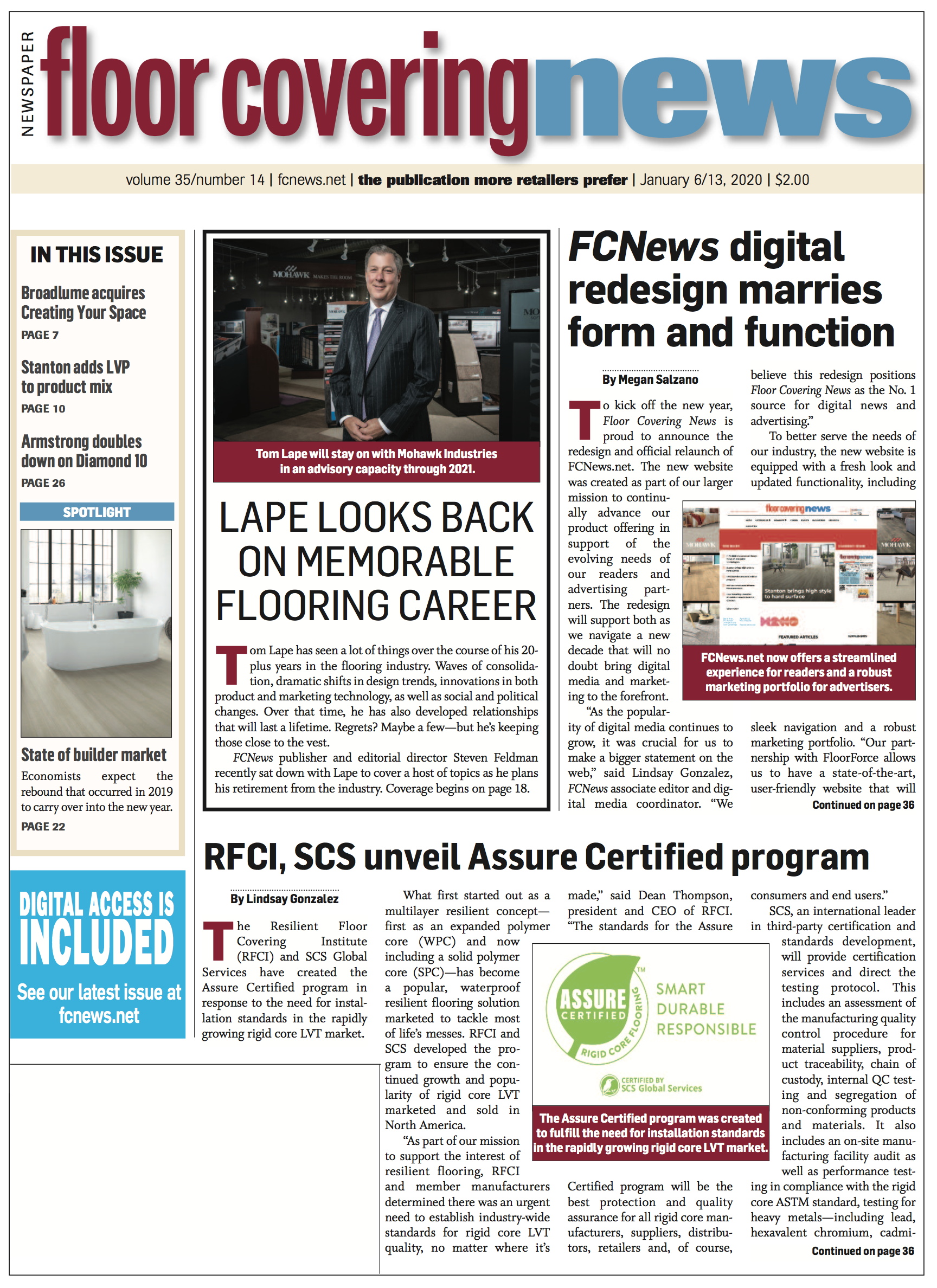
By K.J. Quinn The year 2019 represented a rebound of sorts for housing. While economic and regulatory issues slowed down residential new construction early on, reduced lending and unemployment rates helped stimulate housing demand. Many economists expect that trend to carry over into 2020.
“Looking ahead, we’re optimistic and anticipate low single-digit growth in 2020, with most of the major players that work with our teams anticipating solid growth,” said Larry Brookshire, Mohawk’s vice president builder and multifamily sales operations.
Suppliers said the slowdown in new home construction that began in the fall of 2018 continued into the start of 2019. “Starts had a slow first half but have picked up in the second half of the year,” said John Szilagyi, manager market intelligence, Tarkett North America. “This should bode well for flooring in the next year. Builder confidence is high, and the market dynamics are situated for growth.”
Home prices outpaced income growth, primarily due to long-term, supply-side challenges such as rising construction costs connected to regulatory burdens and rising material issues. Further impacting new housing sales were a labor shortage within the construction trade and rising interest rates. “This was clearly seen in the National Association of Home Builders/Wells Fargo Housing Market Index, a measure of builder confidence, which fell from 68 to a level of 56 at the end of last year,” noted Robert Dietz, senior vice president and chief economist, NAHB.
However, the Federal Reserve’s move to a more dovish monetary policy position lowered mortgage lending rates from nearly 5% last fall to around 3.6% recently on the 30-year fixed rate. “This decline in rates caused existing home sales and new home sales to rebound,” Dietz observed. “In turn, this reduced some excess inventory of new construction and has resulted in a growing incentive to build. Single-family permits have risen since April, and single-family starts increased since May.”
These and other positive developments contributed to an uptick for flooring sales to this segment about midway through the year. “Something happened in the third quarter, and the work in progress grew at a rate much higher than expected,” said Kevin Carnes, vice president new construction at McSwain Carpets & Floors, Sharonville, Ohio. “By the end of June, the billings were reflecting this trend. It was like someone flipped a switch.”
While single and multi-family housing starts at the end of 2019 were tracking roughly 1% higher than the same period in 2018. Analysts expect more of the same heading into the new year. “We expect new home construction to grow at a low single- digit rate in 2020, with the growth mainly coming from the single-family sector,” said Tom Cole, Armstrong’s vice president distribution and builder. Whether this momentum is short lived will depend largely on key economic indicators. “Undoubtedly, the overall economy is going to slow in 2020,” Dietz said. “Our forecast calls for overall growth slowing to 1.9%. However, as long as unemployment remains low and interest rates remain attractive, housing should fare well.”
New home sales dropped in three of four U.S. regions in September, with the Midwest being the lone exception. Still, new residential construction data could be taken with a grain of salt, as it can be skewed by peaks and valleys in key regions. “In our region, the spring was extremely wet, and the builders had trouble getting foundations in—which slowed all the trades behind that activity,” McSwain’s Carnes said. “Once things dried out and it was dry for an extend- ed period of time, we saw the movement in our installed sales.”
There are trends within different age groups influencing the housing market as well, whether it’s retiring baby boomers building their dream homes or millennials purchasing their first or second house. “We see a lot of regional increases when companies like Amazon continue to expand facilities and hire more people,” Carnes added.
Mitigating factors
An ongoing issue is housing affordability, as declines in home ownership persisted well into the market recovery and recent gains have been restrained. “Housing affordability is a problem 10 years in the making, as both rent burdens climb and construction costs and declining mobility rates hold back inventory of new homes and resales, respectively,” Dietz said.
Land positioning and interest rates also play a role in the decision-making process, namely where consumers want to reside and the type of structure to live in. “Certain zoning ordinances govern the type of dwelling being greenlit, so our portfolio continues to evolve in both surface type and quantities needed,” Brookshire said. “As a leading manufacturer, the onus is on us to maintain the pace with the design community so we can meet their demands.”
Dal-Tile reported seeing many builders respond to the need for more entry-level homes to help first-time buyers as well as retiring seniors nationwide. “This, of course, impacted the dollars spent on flooring,” said Dan Butterfield, vice president, residential. “All segments remain in the fight for their share, but the luxury vinyl category has certainly taken significant share.”
Meanwhile, higher pricing due to tariffs stand to impact pricing on building materials and interior decorating products such as flooring. “As an alternative, we offer unique domestic products that were developed specifically for builder, property management and multi-family environments,” Cole said.

The access/cost to construction labor shortage and rising regulatory costs haven’t helped, either, with the sector short nearly 400,000 workers, according to NAHB. “Besides recruiting new workers in the sector, we should be aware that worker productivity—the key limiting factor on wage growth—is likely to go down before it goes up,” Dietz said. “When we replace workers with skills with younger, less experienced workers, output per worker will fall.”
The shallow skilled labor pool can slow down the building process and has a direct impact on flooring installations. “The biggest choke point in our region is the number of qualified ceramic mechanics,” McSwain’s Carnes reported. “If that capacity could grow by 50%, we could take on another 10%- 15% in growth from new builders. Without that elasticity in the trade, we are having to balance our other sales against the number of ceramic jobs that can be installed per week.”
Tom Urban, general manager, Great Lakes Carpet, Wildwood, Fla., added, “We are using several methods to attract new people into our business through trade schools, manufacturer programs and training programs we have created.”
Vendors are attempting to mitigate the issue, to some extent, by developing flooring that is quick and easy to install. “We offer multiple LVT product lines that are designed to use a quick and simple angle locking installation technology and can span most subfloors with minimal prep,” Armstrong’s Cole said. “Also, in our vinyl offering, we offer modified and true loose-lay installation methods that allow for faster installation.”
For Mohawk, Brookshire said, the company continues investments in its R&D practice to simplify and improve efficiencies for installation. “When labor is at a premium, the days we can help give back translates into preservation of margins for the builder.”
Style trends
A key element of construction volume is new single-family home sizes, which continue to shrink. In general, volume growth is occurring among younger homebuyers and renters who need smaller homes to meet down payments or other budget requirements. “However, other surveys do indicate that millennials are, in fact, looking at the largest homes,” Dietz said. “This seeming disconnect is due to frustrations regarding price and available inventory, a fact of life for all generations as they search for housing for the first time.”
As homes become smaller, builders are attempting to hit the right price point in a specific area, according to industry members. “The total square feet in new home construction is likely to continue to be reduced to help accommodate cost,” Butterfield said. “We’ll keep a close eye on the ‘three Ls’ that most impact overall home building health: lots, labor and lending.”
Open floor plans continue to be a consumer preference when considering the layout of the home. “With that, we are seeing the desire to use a single surface throughout to create a continuous flow of materials through the space,” Armstrong’s Cole said. “Some of our lines are actually able to span large distances with- out the need for transitions, making the continuous look even more achievable.”
Generally, younger residents are more likely to prefer open layout homes while older house seekers are willing to accept a smaller number of bedrooms, observers say. Storage options are a must-have for all generation groups. “All of these preferences have flooring consequences,” Dietz said.
Flooring choices are impacted, in part, by how these spaces are utilized. For example, carpet is projected to remain a go-to product for bedrooms. “While so much emphasis is placed on the hard surface realm, comfortable living spaces still have a place for high-style and fashion-forward carpet,” Brookshire said.
Carpet remains one of the most affordable floorings, as most production builders use base-grade carpet for their houses, experts say. Still, dealers can generate additional profits by upgrading home buyers to better quality products and padding.
“Pad seems to be an easy upgrade for most home buyers, but the increase is usually one level,” McSwain’s Carnes said. “Almost every builder program we have is a polyester fiber for the first three to four levels, and that has resulted in very few nylons being sold these days.”
Hard surfaces—led by LVT and WPC products—are growing at a much faster rate in single- and multi-family homes. “We’ve seen explosive rigid LVT growth in new home construction,” Armstrong’s Cole reported. “These products have taken significant share from carpet and even other hard surface flooring.”
SPC and WPC products are expanding into areas previously occupied by carpet, providing dealers with opportunities to boost the value of each sale. “With many consumers hearing the words ‘waterproof flooring,’ they feel it is a better choice than carpet and now can add an area rug over the hard surface flooring where needed,” Great Lakes’ Urban said. “There is a worry about the waterproof story being over sold, so we are careful as to how we promote it internally.”
Servicing builders
The pace in which the builder business moves can be a daunting challenge, industry members say, as it requires seasoned and efficient operators to meet service requirements. “There’s high demand for inventory, so dealers and contractors have become adept at spinning multiple plates,” Mohawk’s Brookshire said. “With so many options in flooring, whether it be surface material or color palettes, our job is delivering simplification.”
There are a thousand things that can go wrong with a construction project, but the goal is to ensure flooring won’t be one of them. “That commitment comes in multiple forms, whether it’s sourcing material and domestic manufacturing to delivering product when we say it will be there,” Brookshire said.
As builders get bigger, it is creating more pressure in the supply chain to meet demands for service, price and product. “Product manufacturers that can provide materials or products that guarantee time of delivery, or a quantifiable saving in terms of installation or other service requirements during construction, will have a competitive advantage,” Dietz said. “Reducing cycle time is how builders will succeed, and they will reward service providers and building material dealers accordingly.”
Dealer margins, however, can be squeezed whenever builders put their programs out for an RFP requesting not to exceed costs from the manufacturers. “This is not helpful as the builder usually makes more than we do on any flooring products when they sell the house,” McSwain’s Carnes said. “For them to start limiting the amount of profit we can make reduces our ability to provide the level of service they require.”
Given the margin pressures and service requirements, the availability of qualified installers remains a major concern. Trade associations, retail groups and suppliers engaged in the builder market are increasingly investing resources into training and education to improve installation procedures and provide a better understanding of what their customers need.
“Collectively, we are working together with NFA to attract new people into all aspects of the flooring business,” Great Lakes’ Urban said. “Finding new, talented people for both sales and installation has brought a new energy and excitement back into the industry.”

